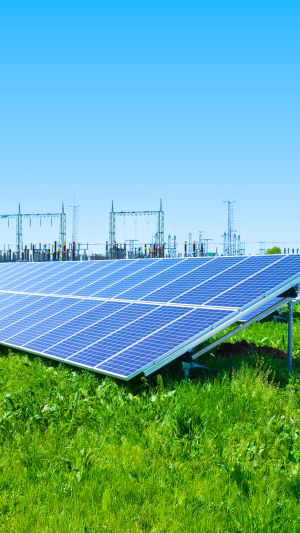Across cities and countryside alike, it’s hard not to notice the growing number of rooftops shining under neat, dark panels.
These are solar panels, and they’re quietly transforming how we create and use energy. A solar panel is a collection of solar cells that absorb sunlight and convert it into electricity through a process called the photovoltaic effect.
Each panel contains dozens of small cells, usually made from silicon, working together to turn sunlight into usable power. When connected, these panels form a solar energy system, capable of providing electricity for homes, schools, factories, and even entire communities.
<h3>How Do Solar Panels Work?</h3>
The science behind solar panels is simple yet fascinating. When sunlight hits the surface of a panel, the energy from the light knocks electrons loose inside the silicon cells. These moving electrons create an electric current.
This current flows through the wiring to an inverter, which converts the direct current (DC) produced by the panel into alternating current (AC)—the kind of electricity we use every day for lights, appliances, and charging our devices. The process is clean, quiet, and instant. As long as there’s sunshine, solar panels keep producing energy.
<h3>Types of Solar Panels</h3>
Different types of solar panels offer different advantages, depending on how and where we use them:
<b>1. Monocrystalline panels: </b>Made from single-crystal silicon, they’re the most efficient—around 22%—and have a long lifespan of up to 30 years. Their black color gives them a modern look that blends easily with rooftops.
<b>2. Polycrystalline panels: </b>Slightly less efficient (around 18–20%) but more affordable, these blue panels are popular for homes and small businesses.
<b>3. Thin-film panels: </b>Lightweight and flexible, they can be used on curved surfaces or portable devices. Although their efficiency is lower (around 12–15%), they perform better in low-light conditions and high temperatures.
Choosing the right panel depends on our space, budget, and energy needs. Many installers now offer hybrid systems that combine types to maximize performance throughout the day.
<h3>Benefits of Using Solar Panels</h3>
One of the biggest reasons solar panels are booming is that they help us save money and protect the planet at the same time. Once installed, they generate electricity for free using sunlight, reducing or even eliminating monthly electricity bills.
They also cut down carbon emissions, helping fight global warming. Unlike fossil fuels, solar energy doesn’t release harmful gases or pollutants. And because the panels don’t move or make noise, they require very little maintenance.
Many governments around the world offer tax credits, rebates, or incentives to encourage homeowners to switch to solar. These programs can cover up to 30% of installation costs, making the investment even more worthwhile.
<h3>Challenges and Considerations</h3>
Of course, solar panels aren’t perfect. The initial installation cost can be high—typically between $10,000 and $20,000 for an average home system. Weather also plays a role: cloudy days or long winters reduce energy production.
Another challenge is energy storage. Since panels only generate power when the sun is shining, many households use solar batteries to store excess electricity for nighttime or rainy days. Fortunately, battery technology is improving quickly, becoming more efficient and affordable each year.
To make the most of solar panels, we should also consider their placement—ideally facing south (in the Northern Hemisphere) or north (in the Southern Hemisphere) to capture maximum sunlight throughout the day.
<h3>Solar Panels and the Environment</h3>
While solar panels are a clean source of power, their manufacturing and disposal require attention. Producing panels involves chemicals and energy, which can create waste if not managed properly.
The good news is that the solar industry is increasingly focusing on recycling. Many companies now recover valuable materials from old panels, such as glass, aluminum, and silicon, to reuse in new ones. This effort makes solar technology even more sustainable in the long run.
<h3>The Future of Solar Panels</h3>
Solar panels are at the heart of a global shift toward renewable energy. From massive solar farms in deserts to small portable chargers, their use keeps expanding. New innovations, like transparent solar panels and solar roof tiles, are making it easier to integrate solar power into daily life.
Lykkers, imagine driving cars powered by solar energy, or living in cities where every building produces its own electricity. That future is getting closer every day. As technology advances, solar panels will not just be tools—they’ll become part of our living environment.
<h3>Our Bright Tomorrow</h3>
Lykkers, solar panels are more than just a modern innovation—they reflect a shift in how we live, dream, and care for our planet. Each rooftop installation brings us closer to cleaner air, lower energy bills, and a greener world.
The next time we see sunlight glinting off a rooftop, let’s remember that it’s more than just light—it’s possibility. Together, we’re turning rays of sunshine into real power, lighting up homes, cities, and the future we all share.





